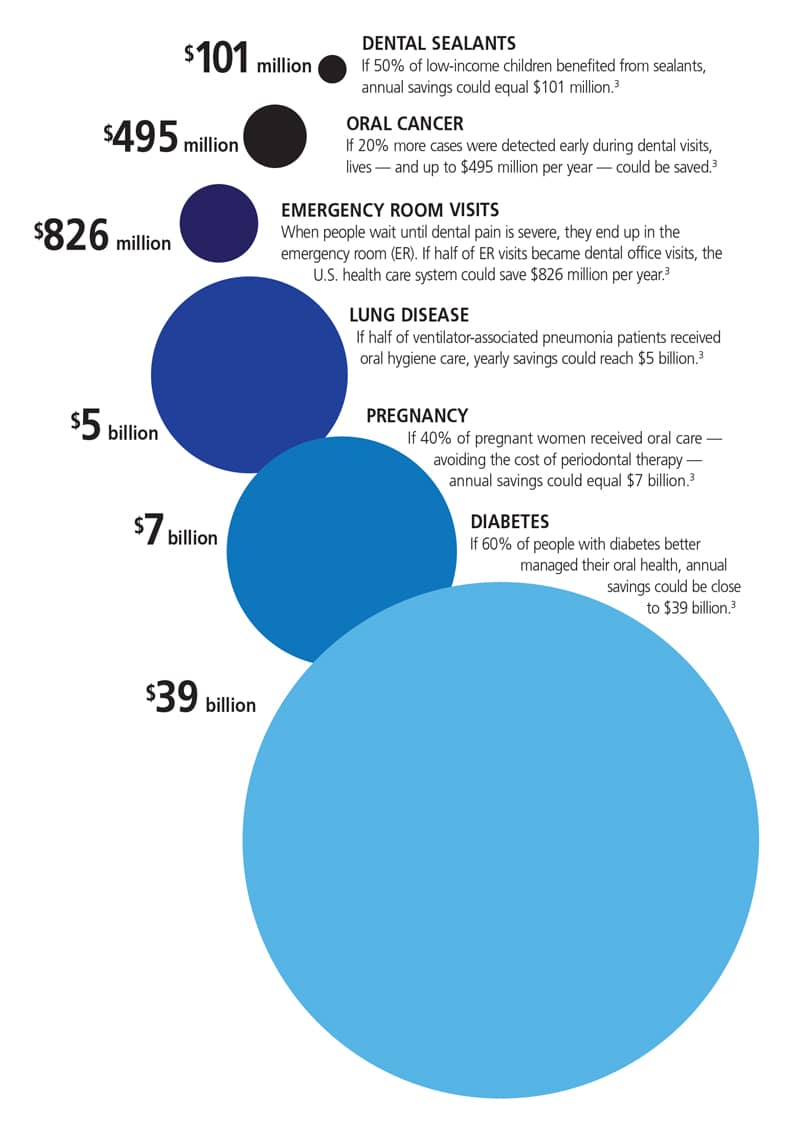How Dental Visits Can Save Billions in Health Care Costs
The Dental Trade Alliance (DTA) believes it has a way to save the U.S. health care system, government and businesses billions of dollars a year and make Americans healthier.
The Dental Trade Alliance (DTA) believes it has a way to save the U.S. health care system, government and businesses billions of dollars a year and make Americans healthier. The secret: Get people to the dentist every year. A new white paper released by the DTA, “An Unexpected Strategy for Reducing Health Care Costs,” focuses on what it calls a simple biological truth — that the health of the oral cavity affects systemic health.
The DTA commissioned Uma Kelekar, PhD, an assistant professor of health care management at Marymount University in Arlington, Virginia, to study the costs and benefits of expanding oral health care. The report suggests ways in which routine dental care could bring health care costs down by eliminating the need for more expensive treatment later.
A United Concordia Oral Health Study,1 led by Marjorie Jeffcoat, DMD, looked at individuals with systemic diseases. Analyzing more than 330,000 insurance records, researchers found that when patients received treatment for periodontal disease, their medical costs and hospital visits decreased. Annual savings were as high as $5681 per person, with hospitalization dropping as much as 39.4%.

DIABETES: The biggest declines in hospitalization were associated with patients with diabetes, as it was shown that controlling periodontal involvement could save up to $39 billion annually in health care costs.
PREGNANCY: Poor oral health is associated with low birth weight, preterm birth, preeclampsia and gestational diabetes. Jeffcoat’s study found an average savings of $2433 per pregnancy when mothers received periodontal treatment.
LUNG DISEASE: Because the oral cavity retains respiratory pathogens, oral hygiene is a cost-effective therapy for patients with ventilator-associated pneumonia (VAP). When clinical staff in one intensive care unit administered an oral care treatment costing $3 per patient, they saw VAP cases — which can cost $10,000 to $40,000 each — decrease by 46%.2
So how do we do better? The DTA makes these suggestions: Insurance companies can offer oral health care as a core service. Policymakers can mandate dental coverage. Businesses can design dental wellness programs. Physicians can actively refer patients to dentists. Dentists can extend office hours to help patients avoid the emergency room. b can incorporate basic dental treatments — such as fluoride varnishes and sealants — into annual checkups.
The DTA has developed a campaign and plans to take this argument to decision-makers in government and industry.
References
- Jeffcoat MK, et al. Impact of periodontal therapy on general health: evidence from insurance data for five systemic conditions. Am J Prev Med. 2014;47(2):166–174.
- Sona C, et al. The impact of a simple, low-cost oral care protocol on ventilatorassociated pneumonia rates in a surgical intensive care unit. J Intensiv Care Med. 2009;24(1):54–62.
- Figures based on 2014 population and 2014 U.S. dollars. Source: Dental Trade Alliance white paper. An Unexpected Strategy for Reducing Health Care Costs.


